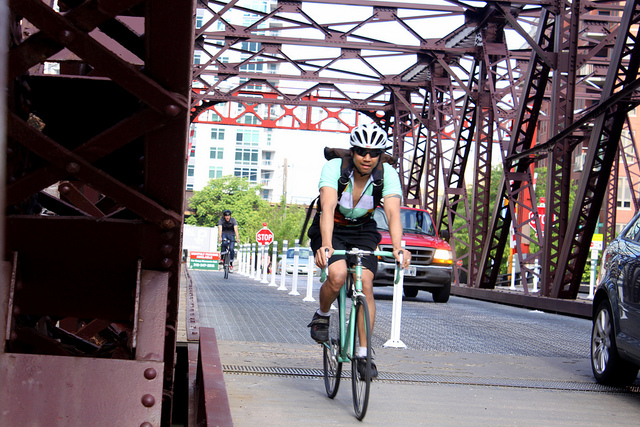State Places Moratorium On City's Plan To Expand Protected Bike Lanes
By Chuck Sudo in News on Feb 11, 2013 3:00PM
Mayor Emanuel’s plan to add 100 miles of bike lanes to the city’s network has hit a snag, for now. The Illinois Department of Transportation wants to conduct its own study into whether the protected or buffered lanes reduce traffic accidents, since some of the planned lanes fall under state jurisdiction.
IDOT plans to gather three years’ worth of traffic accident information and said the current info is inadequate because protected bike lanes are a new thing here. IDOT spokesman Mike Claffey told Tribune transportation reporter John Hilkevitch the agency also has some concerns about issues such as snow removal and other maintenance on the lanes, the visibility of cyclists at intersections, and motorists losing traffic lanes, since protected and buffered bike lanes take up more space than standard lanes.
See how IDOT buried its lede?
Maybe the Chicago Department of Transportation and IDOT should be sharing information with each other. Or they could look at CDOT's initial findings from the Kinzie Street protected bike lane which showed 86 percent of cyclists felt safer biking the Kinzie Street corridor, 49 percent felt motorist behavior improved and evening rush hour travel times actually decreased.
Steven Vance, writing at the newly launched Streetsblog Chicago, reminds us of a study conducted by the University of British Columbia that shows streets with protected and buffered bike lanes reduce the risk of overall traffic accidents (be they motor vehicle, bicycle or pedestrian) by up to 90 percent, in some cases.
CDOT spokesman Peter Scales told Vance the agency is working with IDOT to “(develop) a scope of work for analyzing the safety impacts of protected bike lanes installed to date, and will be initiating this work as ‘after-installation’ crash data becomes available. This evaluation will look at safety impacts for all roadway users.
”Additionally, we are monitoring traffic operations on roadways with recently installed protected bike lanes. This includes traffic counts and travel-time studies for both bicyclists and motorists.“As these analyses progress, we will share our findings with IDOT and work together to develop a strategy for the installation of these innovative facilities on State jurisdiction roadways.”
Vance plants a seed that the city could simply take over the roads that fall under IDOT jurisdiction and bypass the moratorium and cites Peoria’s decision last year to take over Washington Street in their town as a precedent.
